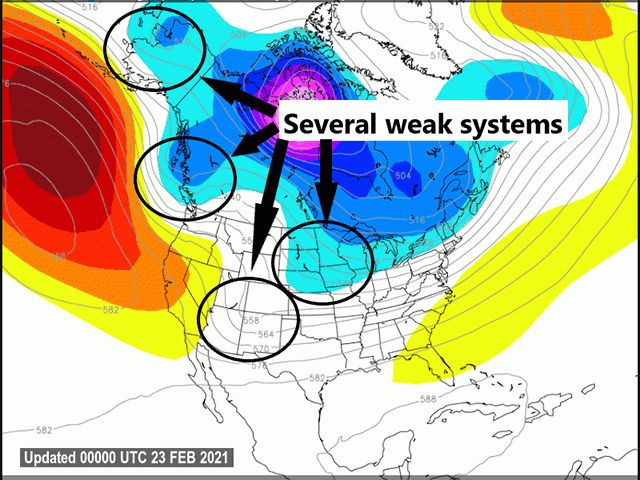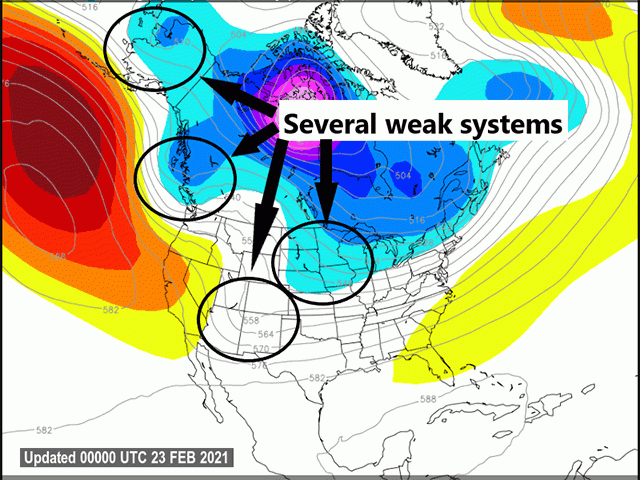Ag Weather Forum
Progressive Pattern Ahead
I would assume most of the country is happy to see an end to the blast of arctic air that has covered most of the U.S. during the last one to two weeks. I know I am. The pattern did produce some hefty precipitation across the Rockies, increasing snowpack for the Missouri River source region and also across the East Coast as winter storms really intensified before heading out into the Atlantic, but most of the country was on the drier side of normal during the last two weeks.
The warmth returns as Pacific-sourced air will continually move across the contiguous U.S. during the next seven to 10 days. Several smaller disturbances will occur within this pattern. Each has the ability to produce light to moderate precipitation; but, for the most part, the precipitation will be more localized than widespread.
P[L1] D[0x0] M[300x250] OOP[F] ADUNIT[] T[]
An upper-level trough digging into the West during the Feb. 26-Feb. 28 weekend could send a somewhat stronger piece of energy or two through the Plains and Midwest, but models are very uncertain about this chance. With these smaller pieces of energy, models usually have a difficult time resolving them, especially since they move relatively quickly, making timing differences larger than normal. If things come together, though, more moderate to heavy precipitation will be possible across the Central Plains through the Midwest. However, uncertainty is rather large at this juncture.
What is more certain is that the Arctic will remain a bit more closed off to the U.S. The Arctic Oscillation is a measure of the strength of the polar vortex. When it is positive, or strong, the tendency is for the cold arctic air to remain locked up near the North Pole. Models suggest that the index will be in positive territory into at least early March. This should maintain our general above-normal temperature outlook for the main growing regions through the next couple of weeks.
Systems may bring in some seasonably cooler air temperatures as they exit, but cold spells will be brief and rather tame, especially compared to the last two weeks.
Precipitation remains needed across the majority of the Plains while drought continues outside of southeastern Kansas and most of Oklahoma. There is also a notable pocket of drought in western Iowa. We are approaching spring and will be look more closely at rainfall during March and April to help winter wheat awake out of dormancy and prepare soils for spring planting.
Models suggest that March may not be a good month in these drier areas, with below-normal precipitation indicated. This matches the DTN forecast fairly well, though our forecast has lower precipitation amounts in the Ohio Valley than the models currently suggest.
John Baranick can be reached at john.baranick@dtn.com
(c) Copyright 2021 DTN, LLC. All rights reserved.






Comments
To comment, please Log In or Join our Community .